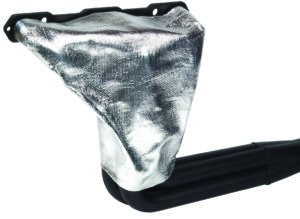
Specialized Labor

After another successful PRI show, it’s time to wind down for the year and celebrate Christmas with the family. Like any big event, it didn’t go exactly as planned, but nothing more than minor annoyances occurred which is a credit to the PRI Show planning people. The fact that they were able to coordinate all of the vendors into and out of the convention center and stadium during the set up and tear down is nothing short of miraculous.
As I was walking the show though, I happened to overhear one of my pet peeves when a person was walking away from the Race Winning Brands plaza which includes Wiseco, Sportsman Racing Products and JE Pistons among others. He said to his friend “That’s cool, but how many different pistons can you really talk about?” As an engineer who has worked on a variety of seemingly minor things, comments like this bug the hell out of me. The engineers who design those pistons put in an ungodly amount of hours in front of the computer using simulation and CAD software to design the best possible piston for each motor. They then work with their machine shops and specialty coaters to make sure the prototypes are built to their specifications. It goes to a trusted engine builder, sometimes in house, to put it all together and dyno the motor. All this and it could be a dud that has no real impact on performance or cost. The process is then repeated until desired results are achieved. Asking that question of anyone in this chain could get you hours of discussion into the tiniest details of what and how this piston differs from that piston. This is literally what those guys do and think about every day at work.
That being said, I do understand where that gentleman who posed the question to his friends is coming from. All of that work is hidden behind these big companies and then filtered through your trusted engine builder. I highly doubt the typical racer understands all that goes into the development of the piston in their car. Similarly though, how many of us actually understand all of the tech and development that has gone into our cell phone?
Back in the 60’s, it was easier to understand the difficulty of going fast. It was done by skilled mechanics and guys who were intimately familiar with suspension setups and motor building. It took either a team, or a very skilled individual to make a car go fast consistently. Over the ensuing decades, as the performance aftermarket grew, it slowly became as easy as writing a check. We have done what many industries have before us and specialized so much that it is almost impossible to know everything that goes into our race cars and still have a full-time job outside of motorsports. This lets us spend more time actually racing and less time working on the car and allowing us to use our individual resources (body, mind, effort) making money more efficiently to then spend on race car parts.
I am certainly not saying that this specialization is a completely bad thing. It has allowed us to go faster, more consistently and in a safer manner. Drag racing has become more competitive and opened up many more people to the opportunity to go fast. But the drawbacks are these types of questions that minimize entire divisions of companies along with the people who work them. It is too easy to overlook the vast amount of research and development that goes into even the lowliest of head bolts. The next time you look at your car, take a moment to appreciate all the people behind the equipment because that $50 part for you, may have been months of work for them. -Franklin DiBartolomeo






